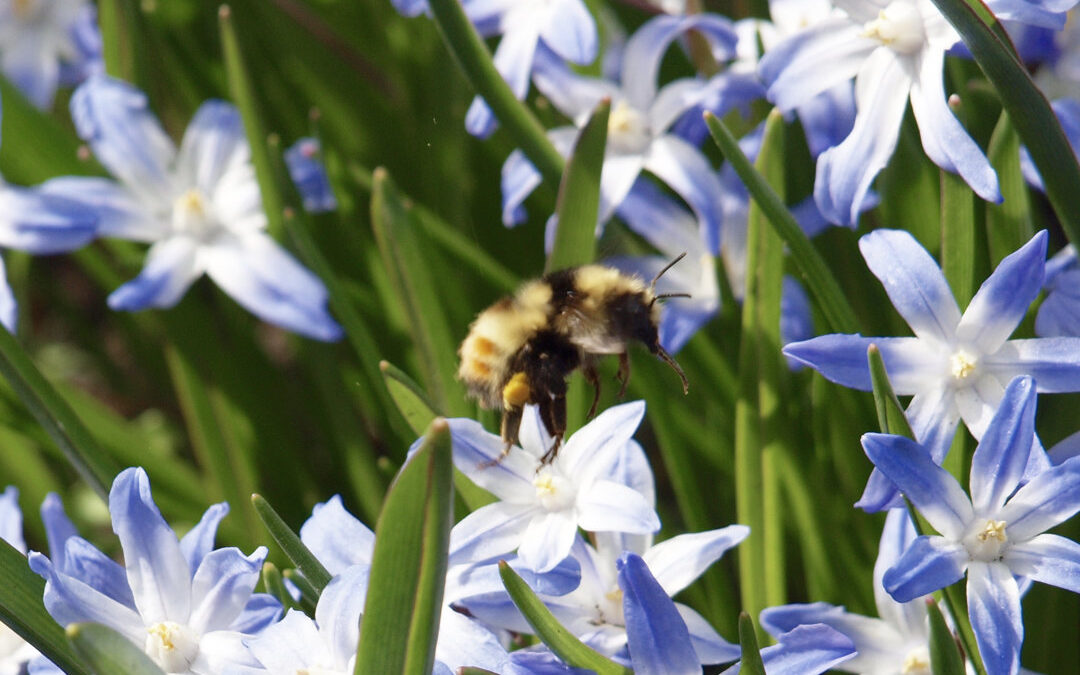GARDENING WITH NATURE
Article by Sigrie Kendrick
Help pollinators survive with careful planning
The Okanagan Valley’s semi-arid climate presents unique opportunities and challenges for creating pollinator-friendly gardens. More than 500 native bee species call British Columbia home— and many of them are found in the Okanagan.
Thoughtful garden design can support these essential pollinators while conserving water, through the application of xeriscaping principles.
The Okanagan’s diverse landscape supports numerous native bee species, each playing a crucial role in pollination throughout the growing season. Without pollinators, the human race and all of Earth’s terrestrial ecosystems would not survive.
Mining bees (Andrenidae species) emerge early in spring, while leafcutter bees (Megachilidae species) become active during summer months. Bumble bees (Bombus species) work tirelessly from early spring through late fall, and metallic green sweat bees (Halictidae family) visit flowers throughout the growing season.

Green Metallic Sweat Bee on a Gazania
Pollinators in Spring
Early spring marks the emergence of overwintered queen bumble bees and mining bees, making early-blooming plants crucial for these pollinators’ survival. Oregon Grape (Mahonia aquifolium) provides essential early spring nectar when few other plants are blooming. This drought-tolerant evergreen shrub supports early-emerging bumble bee queens and mining bees while offering year-round structure to the garden.
Wild Saskatoon (Amelanchier alnifolia) produces early white blooms that attract various native bees. This hardy shrub requires minimal water once established and provides additional wildlife value through its edible berries. Penstemon species, particularly the native Penstemon fruticosus, begin blooming in late spring. Their tubular flowers are especially attractive to bumble bees and provide a reliable source of nectar as temperatures warm.
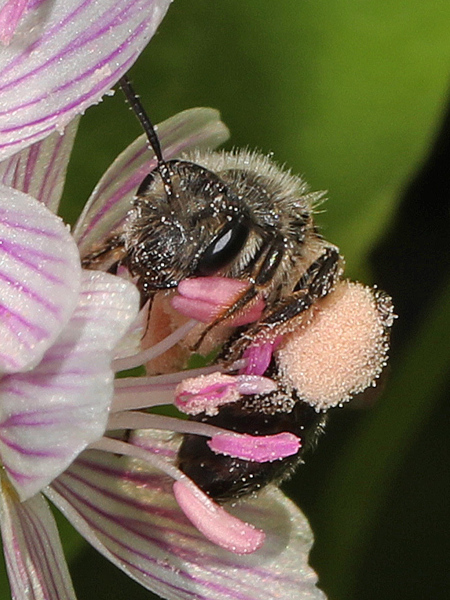
Spring Miner Bee
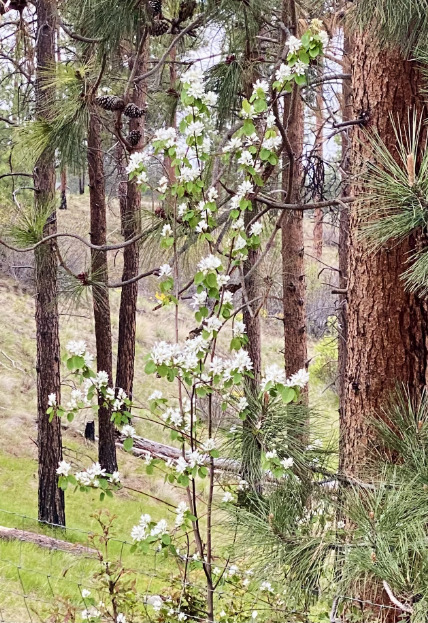
Wild Saskatoon
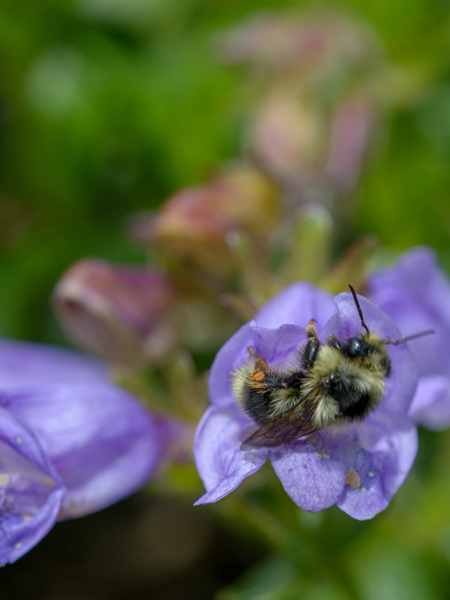
Penstemon Fruticosus
Pollinators in Summer
Summer brings peak pollinator activity, requiring abundant nectar sources. Blanketflower (Gaillardia aristata) offers continuous blooms throughout summer. This hardy perennial attracts diverse pollinators, especially bumble bees and leafcutter bees, while requiring minimal water once established.
Lavender (Lavandula angustifolia) performs exceptionally well in the Okanagan’s climate. Different varieties can be planted to create successive blooming periods, providing consistent nectar sources throughout summer. Rocky Mountain Bee Plant (Cleome serrulata) attracts numerous bee species while thriving in full sun and dry conditions. Its unique flowers add architectural interest to the garden.
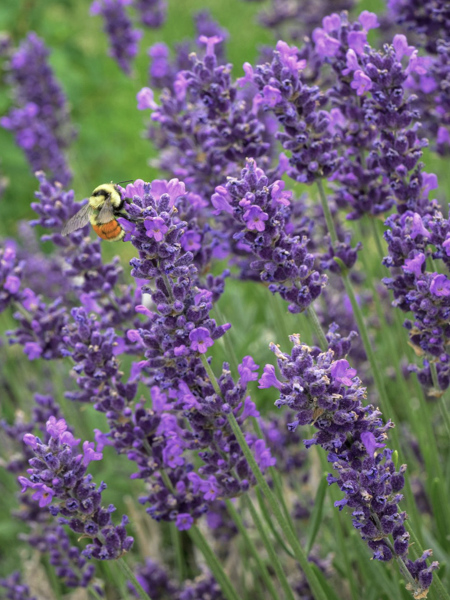
Pollinator bee in lavender
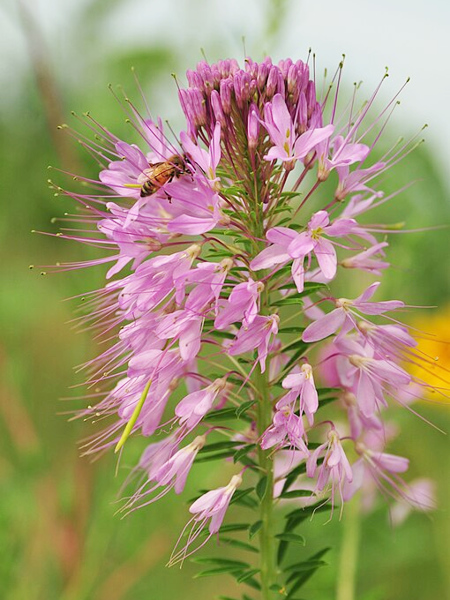
Pollinator in Cleome serrulata

Pollinator bee in Gailardia bloom
Late Season Pollinators
Late-season blooms are crucial for pollinators preparing for winter. Rabbitbrush (Ericameria nauseosa) provides essential late-season nectar. Its deep root system makes it extremely drought-tolerant, and it supports numerous native bee species, particularly small sweat bees and mining bees. Smooth Aster (Symphyotrichum laeve) offers crucial late-season forage. Its purple blooms are particularly attractive to smaller native bees and provide essential nutrition during autumn months. Russian Sage (Perovskia atriplicifolia) produces long-lasting lavender-coloured spikes that attract numerous bee species through the end of the growing season. Its silver foliage adds visual interest while indicating its drought tolerance.
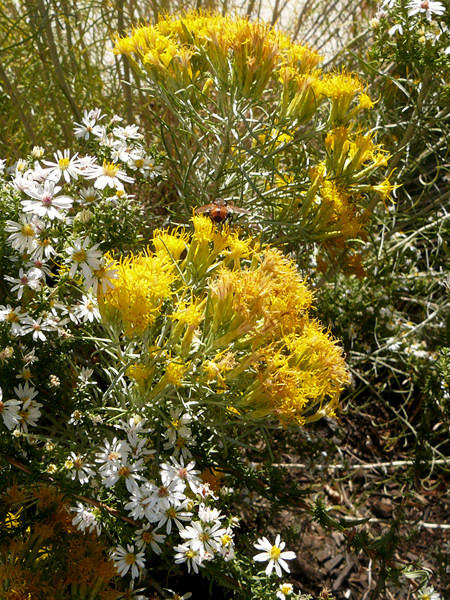
Pollinator in Rabbitbrush
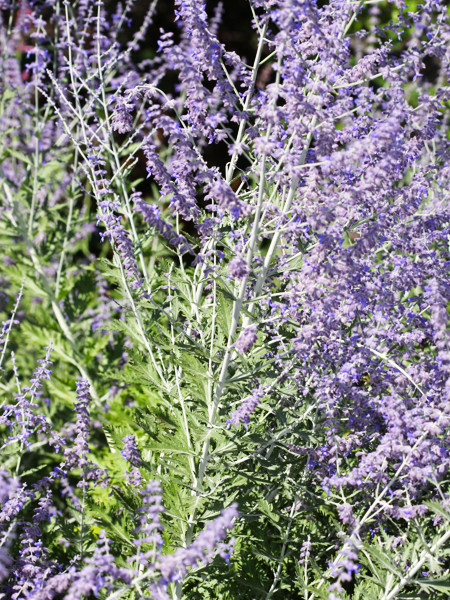
Russian Sage
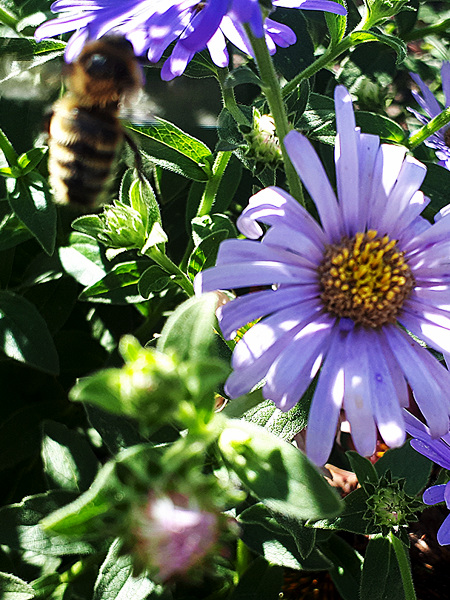
Hoverfly in Aster flower
Pollinator Planning Tips
Beyond seasonal blooms, pollinators need year-round habitat.
- Leave plant stems standing through winter to provide nesting sites for cavity-nesting bees.
- Maintain brush piles and undisturbed areas for overwintering insects.
- Consider installing bee hotels to support tunnel-nesting species like mason bees and leafcutter bees.
Please note that bee houses/hotels are no longer recommended because they invite disease and are simply too complicated to take care of without putting bees at risk. Habitat Over Homes is the way to go. Here is an excellent article on 5 Steps to Create a Wild Bee Sanctuary
Creating a xeriscape pollinator garden in the Okanagan requires thoughtful planning but offers tremendous rewards. By selecting appropriate plants for each season and implementing water-wise practices, gardeners can support native bee populations while maintaining beautiful, drought-resistant landscapes that thrive in our unique climate.
Sigrie Kendrick is a master gardener and executive-director of the non-profit Okanagan Xeriscape Association.

